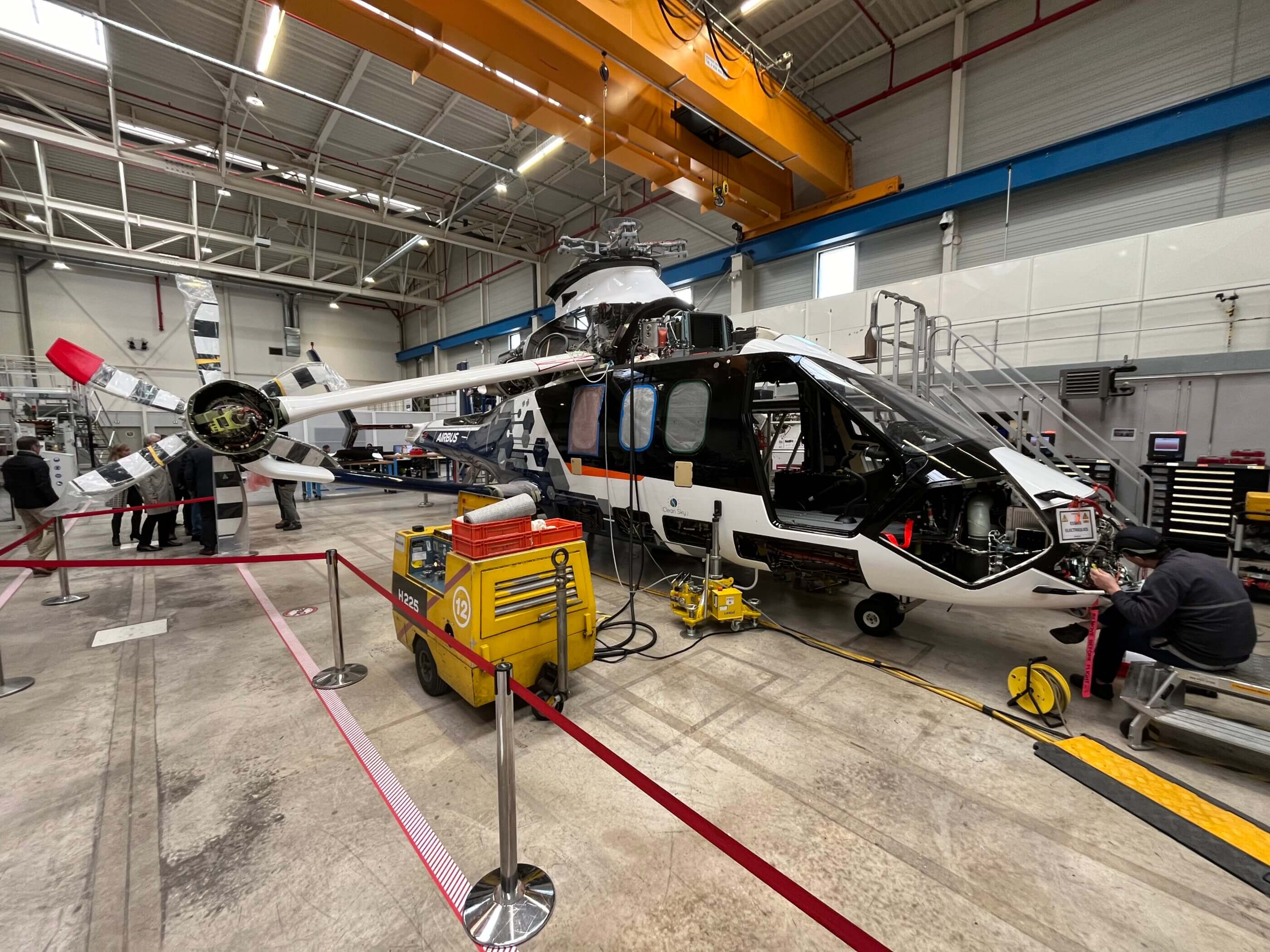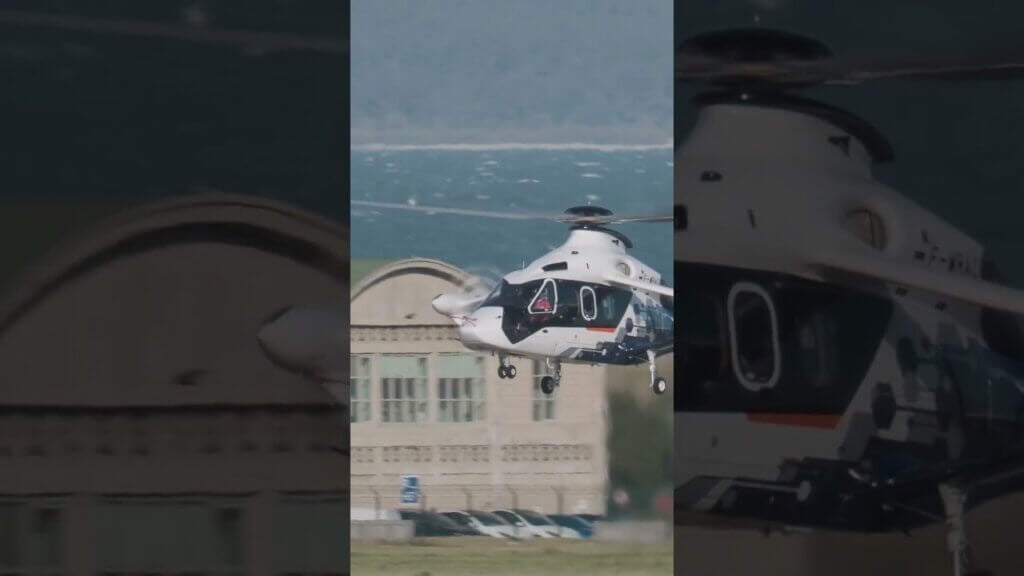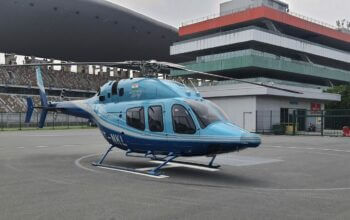The Airbus Racer is set for its first flight in the next few weeks, as Airbus Helicopters prepares to begin its journey towards a target of 200 flight hours on the high-speed demonstrator.
Developed under the framework of the European Clean Sky 2 project, the Racer aims to build on the legacy of the Airbus X3. While that aircraft reached a high speed of 255 knots, Airbus is targeting 220 knots at full speed for the Racer.
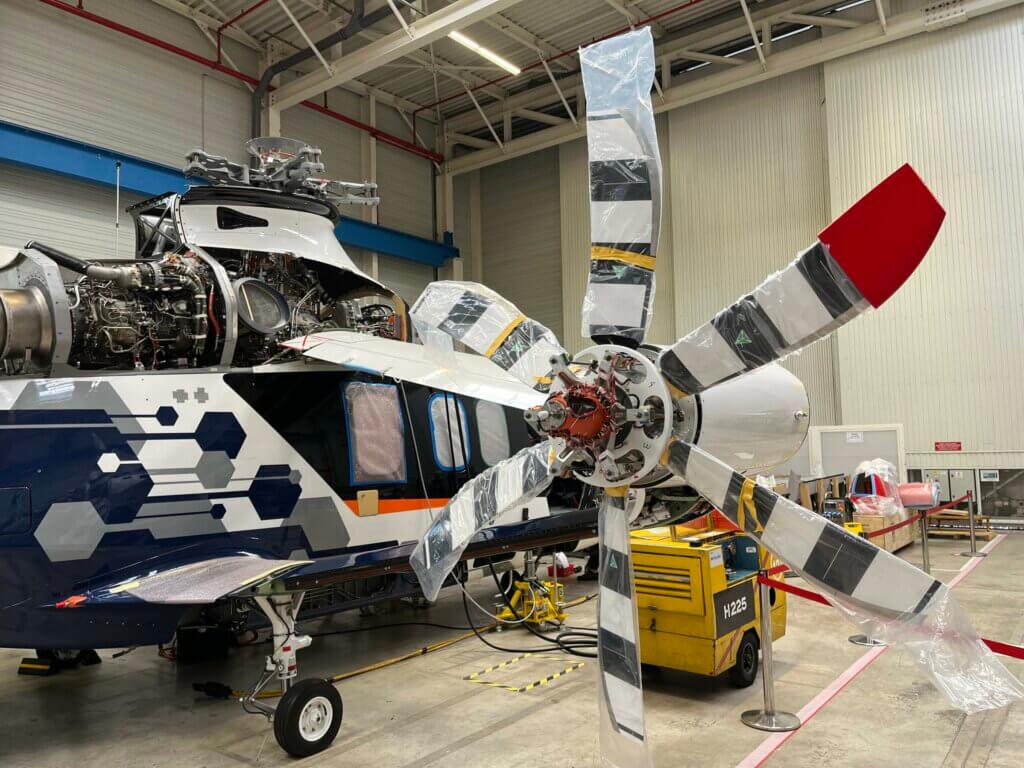
“The Racer is a bit different [to the aim with the X3],” Brice Makinadjian, Racer’s chief engineer, told journalists during a briefing ahead of Heli-Expo 2024. “The idea is to come closer to operational configurations, giving potential customers good capacity in terms of payload and range. So it’s not only [built for] speed.”
The aircraft is close to the final configuration for its first flight, and Makinadjian said it represented a move closer to an aircraft that could be certified, compared with the X3.
Drag reduction is a key element of the design. Makinadjian highlighted the optimization of the faring, which reduces drag by 25 percent over a conventional design, and noted the importance of the Racer’s narrow fuselage.
The box wings — an upper and lower wing that connect the pusher propellers to the fuselage — serve several purposes. Having one wing above the other helps reduce the amount of surface area exposed to the rotor’s downwash, improving hover efficiency, and also allows the landing gear to be fully integrated into the fuselage (reducing drag).
In forward flight at high speed, the wing provides 50 percent of the lift. At this speed, the main rotor speed is slowed by about 10 percent to keep the blade tip speed below Mach 1.
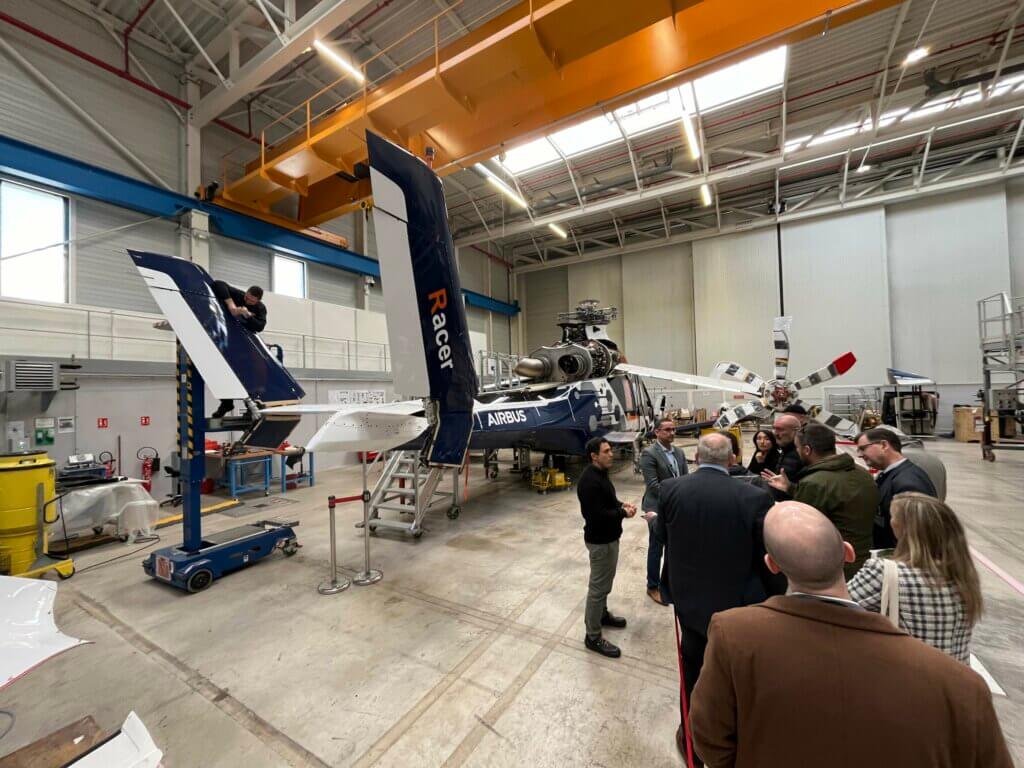
The box wing also creates a vortex in forward flight that helps to improve the efficiency of the pusher propeller behind it — by about six to eight percent, said Makinadjian.
The aircraft has an asymmetrical tail boom, and this helps to enhance performance in a hover, generating loads in a lateral direction that help counteract the torque from the main rotor.
Makinadjian highlighted the maturity of the technologies being used in the Racer, as well as the simplicity of the design.
“The gearbox is connected to the two engines, as we do on a conventional aircraft,” he said. “The only change is that we have two lateral drive lines that are coming through the upper wing that are connecting the main gearbox to the lateral gearbox, connecting the torque to the lateral rotor. So it’s very simple, everything is going in the direction of reducing the cost and also the maintenance costs.”
Airbus has also aimed to keep piloting as simple as possible. With no tilting element to manage, Makinadjian said conventional helicopter pilots can fly the Racer with just a 20-minute briefing. While the real aircraft is yet to the leave the ground, pilots have flown the aircraft on a simulator following the briefing without any issues, he added.
Airbus will soon begin final quality inspections of the demonstrator, which will then move to the flight line to begin ground runs with the rotor turning.
“We will check the good functionality of the engine, tune the main rotor, tune the lateral rotors — really finalize the last few things,” said Julien Guitton, head of the Racer program. The anticipated timeline for first flight is before the end of March.
While the schedule has slipped to the right through the demonstrator’s build, Guitton said this was “linked to the innovation aspect” of the aircraft, but that the team has encountered no “major technical issues.”
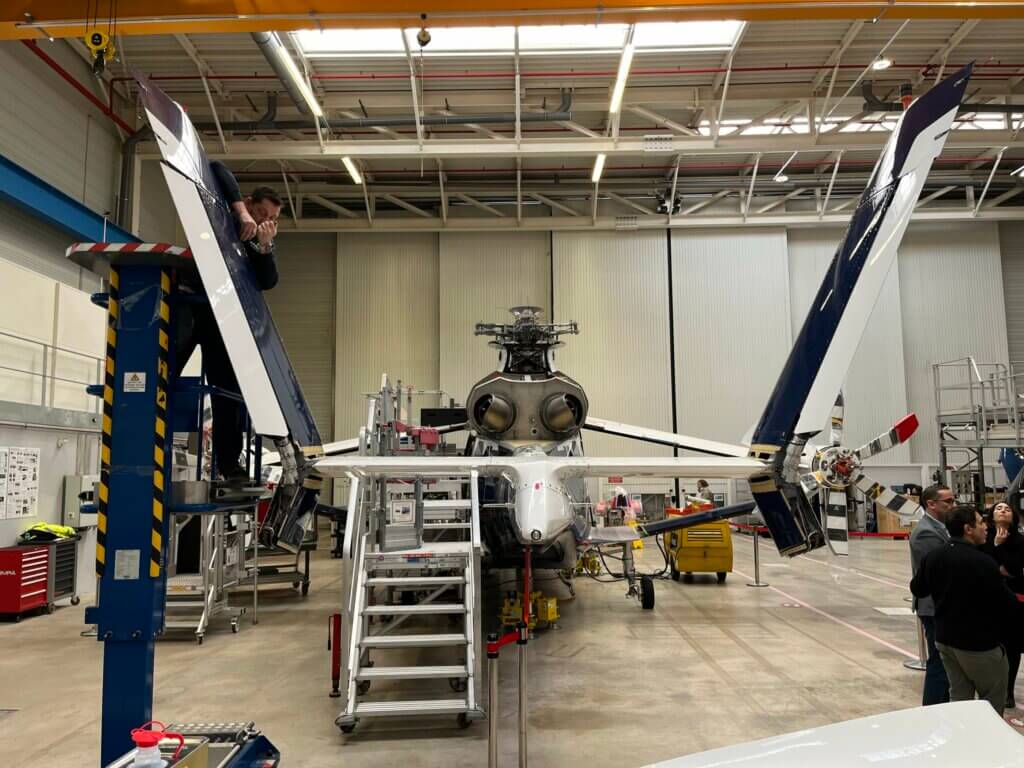
The first flight will represent the conclusion of the Clean Sky Two project, but Guitton said it really represents “the beginning of the Racer,” with the manufacturer targeting an extensive flight test campaign that will likely last two years.
Follow a progressive opening of the flight envelope, a second phase will begin.
“We will explore completely the possible capacity of the Racer . . . not only speed, but what we can offer in terms of payload, range, [and] maneuverability,” said Guitton. [There are] a lot of parameters that we want to explore and concretely demonstrate.”
The second phase of flight tests will also include the installation of an engine that will allow the operator to trial “Eco Mode” — in which one of the two engines is put into idle during cruise flight to enhance efficiency. Makinadjian said it could reduce fuel burn by about 15 percent.
Noise reduction will also be trialled in future, with Racer having the ability to adjust its attitude during takeoff and landing to minimize the sound produced by the main rotor through blade vortex interaction. This adjustment is managed through the automatic flight control system.
“We can make the rotor disc so that the second blade is hitting the vortex a little bit higher or a little bit lower, the energy of the shock is much lower, and the noise is reduced,” said Makinadjian.
The tests will ultimately include demonstrations of civil and parapublic missions and scenarios, potentially with mission equipment installed.
“Clean Sky 2 was a wonderful opportunity and initiative. But now we want to go further and show what could be the future of high speed,” said Guitton. “We need to go further — that’s clear.”





